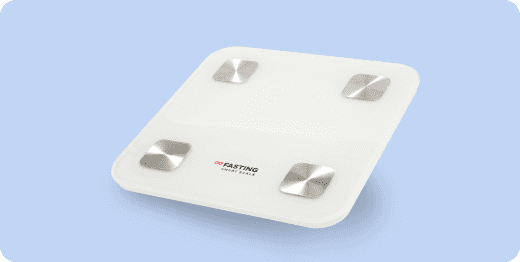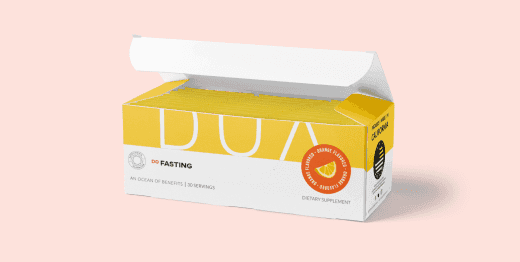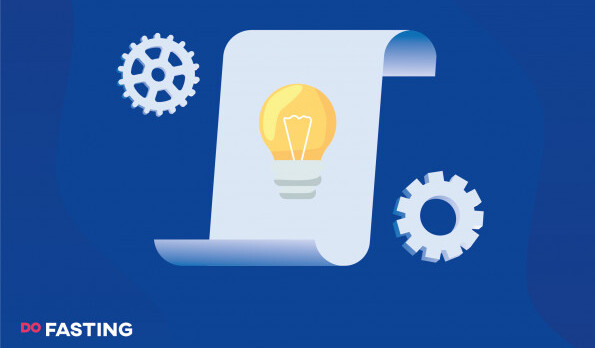Contents
Nutritional Profile of Pasta
Pasta is typically made from durum wheat, which is high in complex carbohydrates, fiber, and protein. Let’s break down the nutritional value of 1 cup of cooked spaghetti with no added salt, fat, or toppings:
- Calories — 221
- Fat — 1.3 g
- Carbohydrates — 43.2
- Protein — 8.1 g
- Fiber — 2.5 g
- Sodium — 1 mg
- Sugar — 0.8 g
- Iron — 1.01 mg
- Folate — 115 mcg
- Thiamin — 0.42 mcg
In comparison, let’s go over the calories of one cup of other popular starchy carb sources:
- White rice (cooked) — 205-242 calories
- Brown rice (cooked) — 216-248 calories
- Potatoes (boiled) — 116-135 calories
- Sweet potatoes (baked) — 103-180 calories
- Bread (white, wheat, or whole-grain) — 120-160 calories
Many starchy carb sources are high in calories, which can make it challenging to manage your weight. If you’re trying to lose weight or maintain a healthy weight, it’s important to monitor your carb intake. You can do this by keeping a food diary or using an app that calculates calories for you, making it easier to stay on track.
One of which is the DoFasting app. It has a built-in calorie, water intake, and step tracker.
Although one cup of pasta contains around 221 calories, it is also a good source of essential nutrients.
For instance, pasta is a great source of dietary fiber, which is crucial for maintaining a healthy digestive system and feeling full and satisfied after meals. In addition, pasta also contains trace amounts of minerals like iron, magnesium, and zinc, which are important for various bodily functions.
However, it’s worth noting that whole-grain pasta is generally a better option than refined pasta. Whole-grain pasta contains more fiber, vitamins, and minerals, which can further enhance its nutritional value.
Take a
1-minute quizand discover how much weight you can lose with DoFasting!

Factors Affecting Pasta Calories
There are a few factors that affect the calories in your pasta. Let’s go over them.
Type of pasta
Some of us have specific preferences when it comes to the type of pasta. Here are some examples of different types of pasta:
- Whole-grain pasta — is made out of whole-wheat flour and contains more fiber and vitamins than regular pasta. One cup of cooked whole-grain spaghetti, for example, has around 174 calories, while one cup of cooked standard spaghetti has about 221 calories.
- Egg noodles — made out of eggs, water, and flour. One cup of egg noodles contains about 221 calories.
- Gluten-free pasta — this type of pasta can be made out of rice flour, corn flour, or other gluten-free flour. One cup of gluten-free pasta contains about 176 calories.
- Udon noodles — thick noodles made from wheat flour. One cup of these noodles contains about 208 calories.
- Linguine — it’s a type of pasta that’s a bit wider than spaghetti. One cup of linguine contains about 210-220 calories.
Cooking method
As previously mentioned, the type of pasta you pick might affect the calorie count. Whole-grain pasta alternatives are higher in nutrients and have fewer calories than typical white pasta.
Yet, it is not only the type of pasta that is important. The cooking method can also make a difference. Boiling is the most common method of cooking pasta, and it adds no extra calories to your dish. Nevertheless, frying your pasta in oil may add flavor and texture while also making it crispy and tasty, but the dish will also have a higher calorie content.
Another common way to prepare pasta is to bake it, especially for meals like lasagna. It’s important to note that these meals include extra ingredients like cheese, cream, or meat, which will make your dish higher in calories.
If you want to have a light meal or to try to lose weight, it’s best to opt for simpler pasta cooking methods, such as boiling and adding low-calorie, healthy ingredients after.
Sauces and toppings
Do you often enjoy pasta without any toppings or sauces? Probably not. Carbonara, tomato pasta, ragu, bolognese, pesto, and other sauces, topped with some parmesan cheese, meatballs, or steamed vegetables, give a whole new dimension to your dish.
It’s worth noting that these sauces and toppings can significantly impact the calorie count of your pasta dish. Here are a few specific examples of how they can do so:
- Carbonara sauce is made with eggs, cheese, and bacon or pancetta, all of which contribute to the calorie count. For example, 100 grams of cheese contains 402 calories, one small raw egg contains 54 calories, and one slice of pan-fried bacon contains 43 calories.
- Bolognese and ragu sauces are made with ground meat. Depending on the type of meat, the sauce can be high in calories and fat.
While the tomato sauce is a lower-calorie option compared to cream-based sauces, it can still contain a significant amount of oil and sugar, which can impact the calorie count. - Pesto sauce is generally considered a healthier option because it’s made with basil, garlic, pine nuts, and olive oil. While it’s lower in fat content compared to other sauces, it still contributes to the calorie count due to the nuts and oil.
- Every additional topping will add extra calories and fat to your dish. While toppings like meatballs and parmesan cheese can be tasty, steamed vegetables are generally the best option for keeping the calorie count low.
Brand
This factor isn’t as important as the others mentioned above, but it’s still worth considering. Most of the time, the brand of pasta has no influence on the calorie count of the dish.
However, certain specialty pasta, such as whole wheat or gluten-free pasta, may have different calorie counts than regular pasta. Apart from that, some brands may contain extra ingredients or use different processing techniques, affecting the nutritional value and calorie count.
Check the nutritional label and the ingredients list to confirm that the pasta brand does not include extra calories.
Does Pasta Have Any Health Benefits?
Even though pasta is a popular dish on many people’s menus, some may consider it to be only a source of carbohydrates. However, it’s important to note that pasta can have several benefits for your health.
Good source of energy
A balanced diet should include a good amount of carbohydrates. Carbohydrates are one of the three macronutrients that the body needs to function properly. They are the primary source of energy for the body and provide fuel for the brain and muscles.
One cup of cooked pasta includes around 43.2 grams of carbs. When you eat pasta, the carbs are broken down into glucose and stored in the body as glycogen. Glycogen is an extra source of energy that can be used by the body when needed.
Additionally, pasta is an excellent source of complex carbohydrates. Complex carbohydrates are composed of long chains of sugar molecules that require more time to break down and digest than simple carbs. As a result, they give a slow and consistent flow of energy to the body. This will help regulate your blood sugar levels which is important to prevent energy crashes throughout the day.
May lower the risk of heart diseases
Consuming pasta in moderation as part of a balanced diet can be beneficial for heart health. Some studies suggest that the complex carbohydrates in pasta can aid in lowering cholesterol levels, leading to a reduced risk of cardiovascular disease.
Additionally, pasta provides fiber, which binds to cholesterol in the digestive tract, preventing it from being absorbed into the bloodstream and further lowering cholesterol levels.
However, it’s important to note that pasta and other carbohydrates made from refined white flour may lack the healthy fiber, vitamins, and minerals found in whole grains and can contribute to belly fat accumulation, which is linked to heart disease and type 2 diabetes.
As a result, choosing whole-grain pasta is recommended, as it provides more benefits to heart health and overall well-being. In fact, studies have shown that people who consume a diet high in whole grains have a lower risk of heart disease compared to those who consume a diet high in refined grains.
Promotes satiety
Increased feelings of fullness can lead to eating fewer calories. Pasta includes a mix of fiber, protein, and carbohydrates which can help slow down the digestion process, which leads to you feeling satiated for longer periods of time.
Fiber absorbs water and swells up within your stomach, which can help increase feelings of fullness and prevent overeating. Besides, fiber consumption has been linked to reduced body weight in epidemiologic research. This impact might be explained by satiety or calorie intake.
Moreover, complex carbohydrates along with fiber, fill your stomach and make you feel satisfied while reducing cravings. These complex carbohydrates increase satiety hormone levels, signaling to the brain that you are full and speeding up your metabolism.
May help with digestion
The complex carbohydrates and fiber present in pasta can be as beneficial for your digestive system as they are for your heart.
Firstly, managing your blood sugar levels and preventing insulin spikes is important for avoiding gas, bloating, and other digestive discomforts. Complex carbohydrates are digested more slowly, which can help regulate blood sugar levels and prevent these side effects.
Constipation is another common digestive issue that can be relieved by consuming fiber. Fiber can help soften stool and promote regular bowel movements, making it easier for food to move through the digestive system.
Moreover, whole-grain pasta is a good source of magnesium, which can help to relax the muscles of the digestive tract and encourage regular bowel movements. Magnesium may also help to ease constipation symptoms.
Take a
1-minute quizand discover how much weight you can lose with DoFasting!

Consider This Before Adding Pasta to Your Diet
You already know that having whole-grain spaghetti for dinner can have specific benefits for your health. However, some people need to consider these possible downsides of a pasta-rich diet:
- Weight gain — eating too much pasta on a regular basis can lead to weight gain since it’s not a low-calorie food.
- Gluten intolerance — wheat-based pasta contains gluten that can cause digestive discomfort for people who are sensitive to gluten.
- High sodium content — ready-made pasta meals contain high levels of sodium that can cause issues for people with high blood pressure or kidney problems.
- Lacks nutritional value — refined pasta can lack essential nutrients. Nevertheless, choosing whole-grain pasta can help alleviate this issue.
Keeping this in mind, it’s essential to consume pasta in moderation and choose whole-grain options and low-calorie sauces and toppings.
Tips for Adding Pasta to Your Weight Loss Diet
Knowing how to add pasta to your balanced diet when trying to lose weight can help you reach your goals. Here are some tips and tricks:
- Use whole-grain pasta — eating whole wheat pasta instead of refined pasta can provide more protein, fiber, and other nutrients.
- Use low-calorie pasta sauces — low-calorie sauces can taste just as good as those that are high in sodium, fat, and calories. Experiment with healthy ingredients to create nutritious food.
- Add vegetables — vegetables are low in calories and high in essential vitamins and minerals. Adding vegetables to your pasta dishes can increase the nutrient density of your meal.
- Practice portion control — portion control is an important part of weight management. Be mindful of serving sizes and aim to eat until you are satisfied, not overly full.
Healthy Weight Loss Recipes With Pasta
To make it easier to add pasta to your weight loss diet, below are some recipes you can try out from the DoFasting app.
Pasta with pesto and zucchini
Nutritional value:
- Energy — 454 kcal
- Fat — 22.3 g
- Carbs — 50.7 g
- Protein — 15.3 g
Ingredients:
- Zucchini — 1 small, chopped
- Whole grain pasta, dry — 1/2 cup
- Pesto sauce — 2 tbsp
- Olive oil — 1 tsp
- Basil, fresh — 5 leaves
- Salt
- Ground black pepper
Instructions:
Cook pasta according to the package directions.
While the pasta is cooking, heat olive oil in a pan over medium-high heat. When hot, add chopped zucchini, stir well, and saute for about 3 min.
Drain the cooked pasta, and add to the pan with zucchini along with pesto sauce. Stir well to combine. Season with salt and ground black pepper.
Serve the pasta with fresh basil leaves on top.
Tofu and pasta salad with spinach
Nutritional value:
- Energy — 257 kcal
- Fat — 9.1 g
- Carbs — 29.9 g
- Protein — 15.1 g
Ingredients:
- Tofu — 1/3 cup
- Whole grain pasta, dry — 1/4 cup
- Tomato — 1/3 small
- Spinach — 1 ½ handful
- Scallions, fresh — 1 tbsp, chopped
- Olive oil — 1 tsp
- Ground black pepper
Instructions:
Bring a pot of lightly salted water to a boil. Cook whole grain pasta in the boiling water, occasionally stirring, until cooked through but firm to the bite. Drain and cool.
Combine cooked pasta, chopped tofu cheese, spinach, and chopped tomato in a bowl. Drizzle with olive oil, season with ground black pepper, and top with chopped scallions.
If you are in need of additional recipes, the DoFasting app offers over 5000 recipes that you can search for based on your dietary preferences or the ingredients you have on hand.
Additionally, if you are looking to take your weight loss journey to the next level, the app provides a calorie, water, and step tracker, as well as an intermittent fasting timer to help you stay on track with your goals.
Take a
1-minute quizand discover how much weight you can lose with DoFasting!

Key Takeaways
There’s no secret that food plays a significant role in your overall health. Therefore, it’s important to consider the type of pasta you consume, whether it’s whole wheat or refined pasta, and the type of pasta sauce you add to your daily diet.
Pasta can indeed provide numerous health benefits, including a great source of energy, promoting satiety, aiding digestion, and reducing the risk of heart disease. However, it’s essential to consume pasta in moderation as it can lead to weight gain.
See how DoFasting will improve your life
Find out what works for you with this 60-sec quiz approved by our experts and get your personal revolutionary fasting assistant.
Start the Quiz













